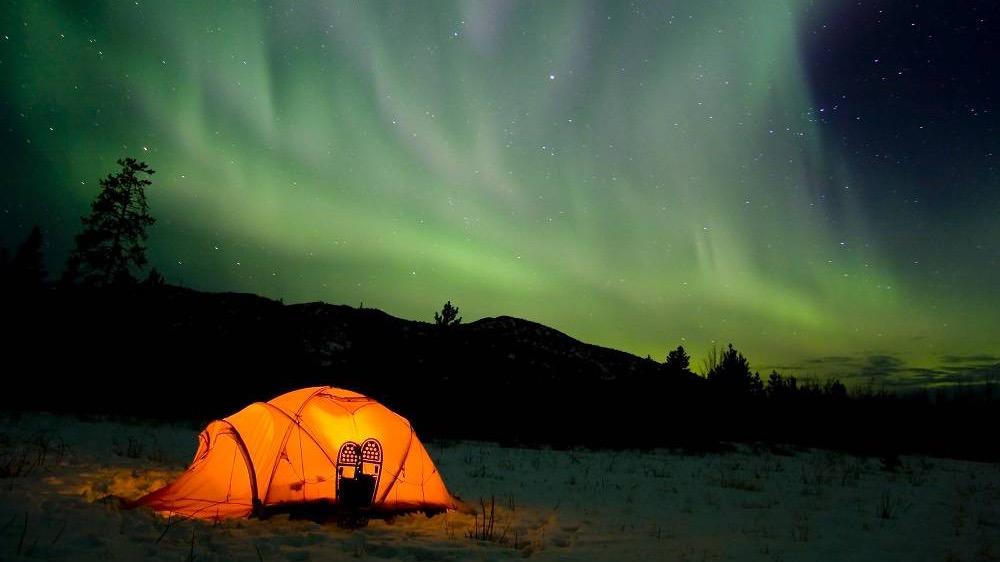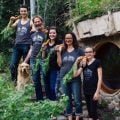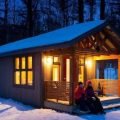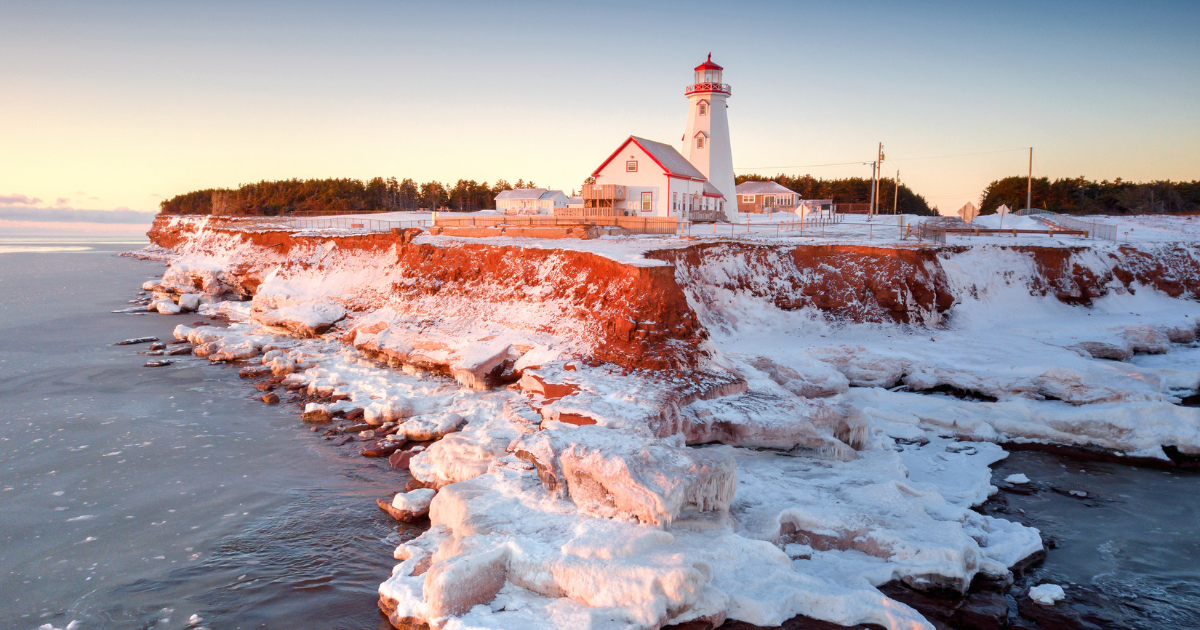There’s a lot that we love about Yukon, here’s why.
The Call of the Lost Moose
Yukon has been bouncing around my hippocampus since I was 17 or so. I had discovered a wayward copy of Another Lost Whole Moose Catalog and planned on moving there immediately after the last 3:30 bell of my high school era sounded. I ended up in the Costa Rican jungle for 3 months instead, but that’s another story.
Another Lost Whole Moose Catalog explored every inch of living in Yukon and convinced me that I needed to join their tribe. The “catalog” was a passion project of more than 200 Yukoners who had submitted survival stories and how-to articles about life up north, on society’s margins.

I wanted to be a modern urban homesteader, to ferment things, to build my own tractor and to brew moonshine in my broom closet like my fellow Yukoners under the famed midnight sun. Why would anyone want to be under the Tuscan sun when you can have a midnight one?

My takeaway was the relaxed pace of “horizontal living.” Horizontalism (a full- or part-time preoccupation) is all about a state of bliss with life and land — with front-row seats to the northern lights!

Now that I am older and horizontally wiser, it seems fitting to go see this Yukon of my teen dreams. We plan to skip the honky-tonk replica saloons, follies and gold-panning day trips for the real deal. And it starts at Watson Lake, the gateway to Yukon.
A Sign of the Times (1942)


Signpost Forest is something that Kim and I decided to recreate in our own backyard without even seeing the original. Carl K. Lindley, an injured American soldier, takes cred for starting the trend in 1942. He was tasked with repairing directional signposts during the Alaska Highway project and decided to add his own custom sign indicating the direction and mileage to his hometown of Danville, Illinois. He was simply homesick and missing Danville, but since then, more than 77,000 have followed suit, adding their own signs.

Midnight Sun Tanning
Less than 10 km outside of Dawson, off the Klondike Highway, true horizontalists will be prone and waiting on June 21 for the annual performance. The Midnight Dome hill is the ideal vantage point to take in the midnight sun as it barely sinks below the Ogilvie Mountains to the north before rising again. At 880 metres above sea level, land snorkellers can also marvel at drone-like views of the Klondike Valley, the Yukon River and the Ogilvie mountain range.

And For Dessert: The Desert
The cherry on top! The Carcross Desert is considered to be the world’s smallest desert at only 2.5 square kilometres. The patch of landlocked beach is leftovers from a glacial lake that existed thousands of years ago. The sand dunes provide a total juxtaposition to a town named for its caribou crossing. Carcross (or “caribou cross”) is known for the herds that make their way across the land strip between Lake Bennet and Lares Lake.

More Caribou Crossings
Northern Yukon National Park, along the shores of the Beaufort Sea, was renamed Ivvavik Ivvavik National Park in 1992. The Inuvialuktun word ivvavik means “nursery” or “birthplace” and is a direct reference to the importance of the area as a calving ground for caribou. For those who like to travel with books that are themed to their destination, Karsten Heuer’s Being Caribou: Five Months on Foot with an Arctic Herd is essential.

Heuer, a wildlife biologist, and his (then) filmmaker wife, Leanne Allison, honeymooned on the heels of the 123,000-strong Porcupine caribou herd, surviving and suffering as the herd did as they attempted dodgy frozen river traverses and encountered grizzlies and salivating wolves. The 4,500-km journey from the herd’s winter feeding grounds to its summer calving grounds on the coastal plains of the Beaufort is monumental and endangered due to the coveted pockets of oil that percolate below. The caribou travel across an unprotected border — into the United States. A historic migration and unsustainable human habits collide in Heuer’s remarkable 2007 memoir, designed for Yukon travel.
For Literary Types
Robert Service’s cabin is known less romantically as Building 6. Built in 1898–1899 during or shortly after the Klondike gold rush, the cabin was designated a historical site by the Historic Sites and Monuments Board in 1967 for its national significance. Parks Canada acquired the two-room cabin in 1970, and it was restored in 1983–1984.

The miner’s cabin is exactly what one conjures up with thoughts of the North. Robert Service’s poetry was a lifeline to Dawson City’s image and added to the shine of the Klondike gold rush. I’d also like to shine the spotlight on Tanja Tudhope, a vibrant high school friend of mine who actually memorized Service’s most famous poem, “The Cremation of Sam McGee.” Published in 1907 in Songs of a Sourdough, the dark poem recounts the cremation of a prospector who froze to death near Lake Laberge, Yukon.

If poetry isn’t your bag, and the call of the wild is more your speed, Jack London lived in Yukon in 1897. The California writer flopped at finding gold, but Yukon inspired his books The Call of the Wild and White Fang.

The Jack London Museum in Dawson City has a replica cabin constructed of logs from his original cabin (located on Henderson Creek), while the other half resides in his hometown of Oakland, California.
Feeling Sheepish
I’m not sure if there are sheep “listers” out there (like bird listers, or “twitchers,” who dedicate their lives to a life list of birds seen or heard), but a trip to Yukon could add three to your list: Dall, stone and Fannin sheep. The appropriately named Sheep Mountain in Kluane National Park and Reserve in the extreme southwest corner of Yukon is a hot spot for Dall sheep viewing. Stone sheep are somewhat more elusive and only found in the southern reach of Yukon (and northern British Columbia).

Fannin sheep can be found in central Yukon, around the communities of Faro and Ross River as well as in the Cassiar and Pelly mountains. Highway travellers and alpine hikers should have their binoculars at the ready too!

Sheep Cheat Sheet
Dall sheep are also known as thinhorn sheep and have all-white fur with tan-coloured horns. During the madness of the gold rush, this sheep population was nearly wiped out, as it was desired for its tantalizing meat.
Stone sheep have fur that can range from charcoal to dark brown in colour.

Fannin sheep are more easily spotted with their white faces and tan-coloured backs, which make them appear like they’ve had a brown blanket draped over them. Recent research has revealed that Fannin are a hybrid of Dall and stone sheep.

Horns: Males have larger, thicker thorns that spiral with age, while female horns remain slender and smaller.
The BIG Three
For those who like to see things with exclusive bragging rights like us, here are three that fall into the “highest” and “largest” categories to get you started:


1. Mt. Logan, located in Kluane National Park and Reserve and part of the St. Elias Mountains, is Canada’s highest mountain at 5,950 metres. 2. Also found in Kluane: The world’s largest non-polar ice field.3. According to Atlas Obscura, a decommissioned DC-3 airplane in front of the Yukon Transportation Museum has earned the title of “World’s Largest Weathervane.” Bought in 1946 by Canadian Pacific Airlines, the plane was retired in 1970 after serving as a military cargo plane, civilian plane and bush plane.

Skyscrapers in the Yukon?
Two multi-storey log buildings in downtown Whitehorse are a distinct time capsule from the Second World War. The City of Whitehorse was on the verge of becoming a capital city and was inundated with military personnel and construction workers tasked with building the Alaska Highway, the Northwest Staging Route airports and the Canol Pipeline. In 1947, entrepreneur and builder Martin Berrigan cleverly constructed the famed Log Skyscrapers, the first privately built multiple-dwelling rental accommodation in Whitehorse. The “skyscrapers,” the only buildings of this type in Canada, are still in their original location and occupied!

Hittin’ the Highway
Here’s your soundtrack: Joey O’Neil’s 2020 folk-country release, Ever Ahead. Her Instagram account says it all: “A dog, a car, a girl, and a guitar.” And yes, she is fashion icon Jeanne Beker’s daughter! In 2012, O’Neil travelled due north (westbound first!) with one vintage suitcase, an old steamer trunk, a portable sewing machine, a record player and a guitar, and found her “on” button in an off-the-grid Klondike cabin.

While you might skip bringing the sewing machine, the Dempster Highway is likely to stitch a place in your heart. The 741-km gravel road starts 40 km east of Dawson City, off the Klondike Highway, travels north over the Ogilvie and Richardson mountains and beyond the Arctic Circle to Inuvik, Northwest Territories. Time to stretch your hamstrings and eyelids.

Gold of a Different Sort
At Yukon Brewing, gold comes conveniently in a can, to go! The founders, Alan and Bob, originally opened the door under the name Chilkoot Brewing Co. Ltd. Their beer epiphany happened around a campfire on a canoe trip. Bob and Alan are Ontario expats, but they’ve lived and worked in the territory for a majority of their grown-up lives. I’m thinking the Spruce Tip Ale and Fireweed Honey are going to be our new faves.

When?
Assuming that the world has righted itself again, choosing when to visit Yukon might be the most difficult decision to make. There are kooky festivals held year-round, and then there’s the midnight sun and aurora borealis to throw into the mix.





February? The Yukon Rendezvous (est. 1964) in Whitehorse celebrates the frontier spirit with hair-freezing competitions in the natural hot springs, plus there’s chainsaw chucking, the world-famous Snow Shoe Shufflers, pancakes and karaoke.

In March, the Percy DeWolfe Memorial Mail Race follows the Yukon River along the historic mail route of the legendary mail carrier. The 200-mile (321 km) international dogsled race loops from Dawson City to Eagle, Alaska, and back. While things heat up between racers from the Yukon Quest and Iditarod, temperatures can plummet to –40°C or bounce up to 10°C.

Yukoners gather to welcome spring in an iconic way. April’s Celebration of Swans sees the arrival of hundreds of trumpeter swans on Marsh Lake as they migrate to their northern nesting grounds.

In May, birders and “sheepers” flock to Faro for the sandhill crane migration. Fannin sheep can also be spotted near the city limits. The Faro Crane and Sheep Viewing Festival is a unique two-for-one, Yukon-style.
Held annually in August, the Great Klondike International Outhouse Race first took place in the 1970s. The dash has seen many skilled competitors like Farts Canada (a Parks Canada team) and Dumped at the Altar (a team of crying runners in wedding attire).


As for the aurora borealis, the first few weeks of winter offer the most dazzling shows, but they are visible from mid-August to mid-April, between 10 p.m. and 3 a.m. The website travelyukon.com recommends the super-scenic route toward Fish Lake or Chadburn Lake Road.







Postcard: Wish We Were There
I think that just about covers our dream itinerary. How long will all this take? It will never be long enough to experience the deep spell of the mighty Yukon. There will always be a reason to go back! To start, I’ve downloaded Joey O’Neil’s album and will be testing my sheep ID’ing skills. I guess there’s time to memorize “The Cremation of Sam McGee” too.



Jules Torti’s work has been published in The Vancouver Sun, The Globe & Mail, travelife, Canadian Running and Coast Mountain Culture. With experiences as a canoe outtripper, outdoor educator, colouring book illustrator and freelancer, she is thrilled to be able to curate, write and read about the very best things in life.













